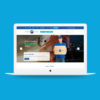Over the past few months, we’ve been taking a close look at many of the digital marketing trends that are predicted to have the biggest impact in 2017. There are a many, many trends that are poised to shake up the industry and provide avenues for experimentation and innovation within the digital space.
But which trends will mean the most for your business? Well, the answer to that question depends, in large part, on what your specific goals and business objectives are. Still, there are certain trends that are more likely than others to contribute to the goal of driving sales. We’re taking a close look at the four big ones we think marketers should be paying attention to.
Predictive Analytics
Nearly all businesses with any web presence are already using web analytics (or at least, we sure hope they are). The purpose of web analytics is to measure the success of previous campaigns and provide insight into the ROI of past efforts.
But the thing about traditional analytics is that while they’re great at measuring the past, they don’t do a whole lot to help marketers understand what will happen in the future. To predict future performance, analysts and marketers have to interpret huge volumes of data generated by analytics and then use that data to make educated guesses about how future campaigns will perform.
A challenging and time consuming task, you say? Enter: predictive analytics. Predictive analytics employs machine learning to create algorithms that can analyze those large datasets and make predictions about future performance.
Predictive analytics has the capacity to help marketers accomplish a handful of important sales-driving tasks.
Leading-Predictive-Analytics-B2B-Marketers-2015
5-New-Social-Media-Features-To-Improve-Your-Marketing-Strategy
One of the biggest draws of predictive analytics is its ability to help companies prospect new customers. Predictive analytics has the power to identify people who are more likely to become future customers because they have similar attributes and behaviors as current customers. Once these “hot” potential customers are identified, companies can be more aggressive or proactive in targeting them through their marketing.
Personalization
In the context of digital marketing, personalization refers to tailoring content, messages, and creative to specific audiences within specific contexts. It could mean altering the focus of homepage content depending on the user’s gender, or tailoring messaging for repeat website visitors to better reflect the needs, desires, and goals of that group of users.
Marketers spend a lot of time trying to come up with ideas and messages that are as universally appealing as possible. After all, we don’t want to miss out on an opportunity to appeal to as many people as possible. The problem is that as our marketing messages become more generic out of a desire to be universally appealing, they also quickly become less effective. The idea with personalization is that by creating messaging and experiences that are tailored to the individual, you will end up creating greater resonance and appeal. By more closely meeting the needs and expectations of users, you increase the chances of a conversion.
According to a survey by eMarketer, users themselves report that there are big benefits to personalization:
46% of internet users said personalization reduces irrelevant advertising
25% of internet users listed personalization as a means of discovering new products they might be interested in
19% of internet users reported that personalization makes online shopping both faster and easier.
Unfortunately, personalization isn’t exactly an easy check on your marketing to-do list. Implementation does require a pretty significant investment. Even with the technology in place, making full use of it can be a bit tricky. Your best bet is to start out slow, and to have a clear understanding of which parts of your funnel can be effectively personalized.
Social advertising
Social advertising used to be pretty simplistic in nature and limited in scope. But as social media audiences have grown and networks have scrambled to monetize them, opportunities to run effective advertising campaigns with the key networks have gradually improved. At the same time, organic reach on these platforms has gradually decreased, which means that to reach users on social, businesses are increasingly required to invest in paid media.
Across the US, ad agencies are investing more and more of their budgets on social advertising:
US-Agencies-Increase-Spending-Social-Networks-2016
And according to the buying habits of US social media users, the effectiveness of these ads, at least on certain platforms, appears to be increasing:
US-Social-Media-Users-Bought-Products-After-Ad-Views-2014-2016
Advertising opportunities are increasing as well. Instagram recently introduced Stories Ads — full-screen, immersive ads that appear between Instagram Stories posts — adding a new way for advertisers to take advantage of the platform. Facebook has indicated plans to include a similar ad format in its Messenger Day feature. This would mark the first attempt at monetization of Messenger, which experienced more growth last year than the Facebook app.
Conversion Rate Optimization
Conversion rate optimization (CRO) isn’t exactly what you would call a new “trend” but it is an arm of digital marketing that gets a lot less attention than it deserves. CRO is the process of testing and implementing changes to your website in order to increase the rate at which users complete a desired action (ie; making a purchase, filling out and submitting a contact form, etc.). And if you’re only going to pick one thing to do to drive sales, this one is probably your best bet.
One of the best uses of conversion rate optimization is to run tests to help improve your value propositions and messaging. A lot of us rely, at least somewhat, on gut feelings when determining the way we message to users, which is kind of crazy when you consider that messaging is one of the most important factors influencing whether or not users will convert. Testing value propositions will allow you to find out how you should message to users, rather than just making informed guesses about what works best. Furthermore, whatever you learn in your tests can be extrapolated and applied to other areas of your marketing. Thus a small test can have a big impact on your overall ability to convert customers and leads.
So many trends, so little time! The good news is that there’s no shortage of new methods to try out as a means of driving sales for your business. The ones listed here are a few of our favorites. Hopefully they’ll help you rake in the sales in 2017.





